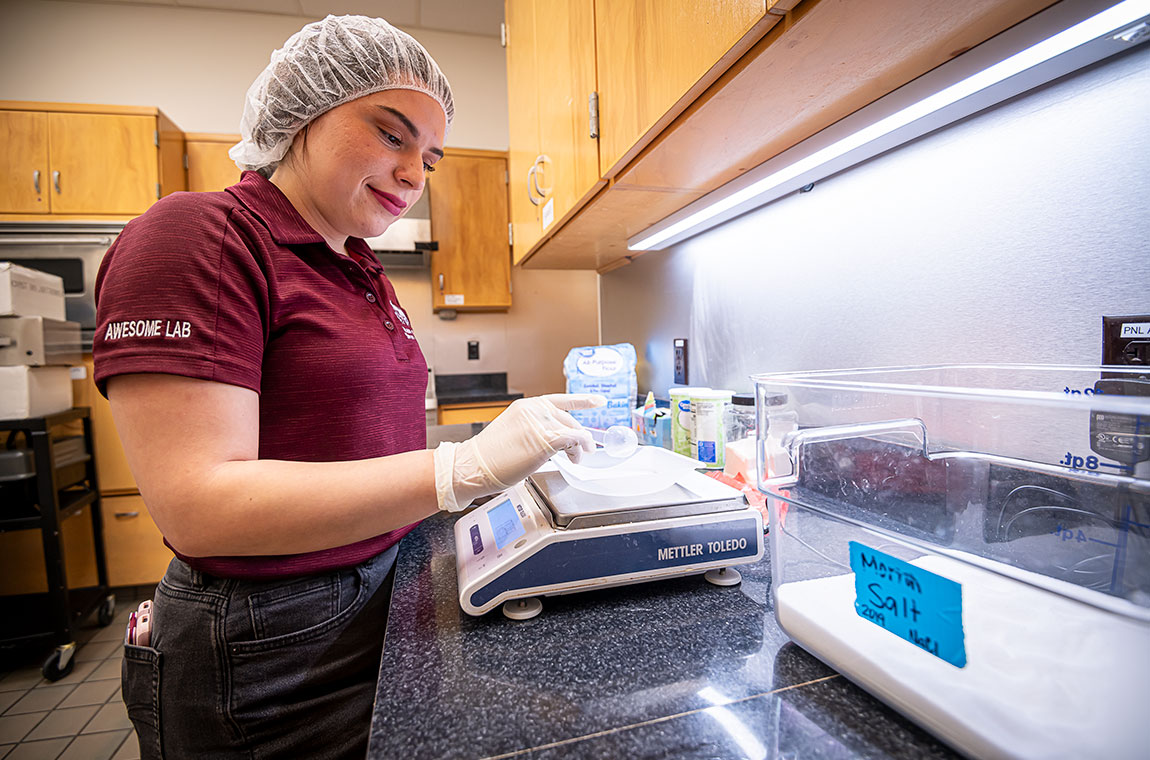The information presented on this page may be dated. It may refer to situations which have changed or people who are no longer affiliated with the university. It is archived as part of Mississippi State University's history.
Chicken nuggets are a recurring protein on many Americans' plates. The convenience of picking them up in a drive-through or throwing them in the oven for a quick dinner paired with the delicious taste makes them a fan favorite for all ages. With the rising number of people suffering from celiac disease and gluten intolerance, chicken nuggets that are coated with gluten-containing batters are increasingly becoming a food that many Americans are no longer able to enjoy. Emily Little, a senior food science, nutrition and health promotion major, is researching and developing gluten-free batters to make chicken nuggets more accessible and health conscious.
From Horn Lake, Mississippi, Little has always had an interest in food. Her family are avid food and health enthusiasts and when the time came to look for career paths, Little combined her love for food with her passion for science and landed in the Department of Food Science, Nutrition, and Health Promotion. It was in this department where Little met Dr. Xue Zhang, assistant research professor, and together they submitted a research proposal to the Undergraduate Research Scholars Program within the College of Agriculture and Life Sciences. Their research originally entitled "The Effect of Cornstarch on Rheological and Sensory Properties of Gluten-Free Batters" focused on adding cornstarch to gluten-free batters, but after their preliminary research, they refined their studies and changed their title.
"The goal of this research was to develop gluten-free chicken nuggets that were both comparable to chicken nuggets containing gluten and acceptable to consumers," said Little. "When removing gluten, the batters lose some of the structure that comes with that protein. Because of that, we added xanthan gum to the gluten-free flours for the chicken nugget batter."
Little concentrated her work by creating gluten-free chicken nugget batters with chickpea flour and rice flour and experimenting with the amounts of xanthan gum in each mixture. After holding descriptive panels with her peers, she determined that a percentage of 0.075% of xanthan gum was the most effective, and she took her finished products to the public with a consumer panel to better understand consumer preferences. As the results came in, Little interpreted the data to finish her poster presentation for the MSU Undergraduate Research Symposium. Rice flour received the best reception from panelists and could potentially be an alternative for industry professionals looking to create gluten-free nuggets. Little was awarded second place for her efforts in understanding the effects of xanthan gum in gluten-free batters.
"This was the first undergraduate research proposal that both Emily and I have ever submitted," said Zhang. "There were many struggles throughout this project, but I enjoyed this process so much. We worked as a team to conquer many challenges and got this project finished, which is the most exciting part."
After graduating in the spring of 2023, Little will return to MSU to pursue a master's in food science, nutrition and health promotion while continuing her research with Zhang in the James E. Garrison Sensory Lab. Together they plan to write a scientific manuscript and submit it to academic journals. Zhang is confident that this research can be expanded into other foods and looks forward to working with Little in the fall.
"I really love what I do here and feel this work could lead anywhere," said Little. "I have a passion for food science and even more so enjoy learning. As long as I'm continually learning, I know I'll enjoy wherever my career takes me."

